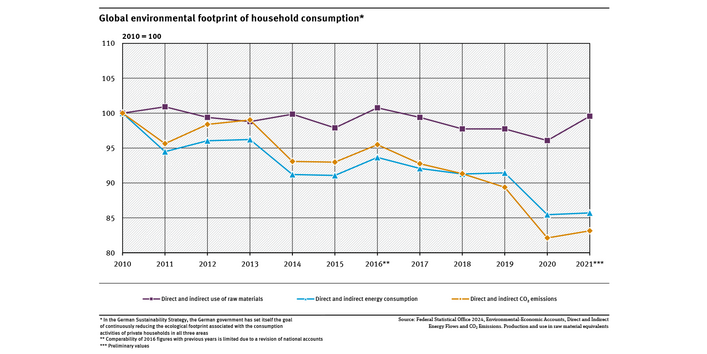Direct and indirect energy consumption by private households has declined by 14.3 % since 2010. Around 26.6 % of energy consumed by private households is generated abroad during the production of goods that are imported.
There is a similar trend in CO₂ emissions. Overall, CO₂ emissions from private household consumption in 2021 were 16.9 % lower than in 2010, with around 23.8 % of emissions resulting from the production of imported goods abroad.
The use of raw materials has not decreased since 2010. Usage of abiotic materials (ores, fossil fuels and other minerals) has decreased by 2.1 % since 2010 and there has been a 3.0 % increase in biomass. In total, approximately 659 million tonnes of raw materials were used for private household consumption in 2021.
When the three sub-indicators are viewed together, the picture is mixed: While the use of raw materials is stagnating and requires further efforts to achieve the German government’s target, energy consumption and CO₂ emissions are moving in the desired direction.
